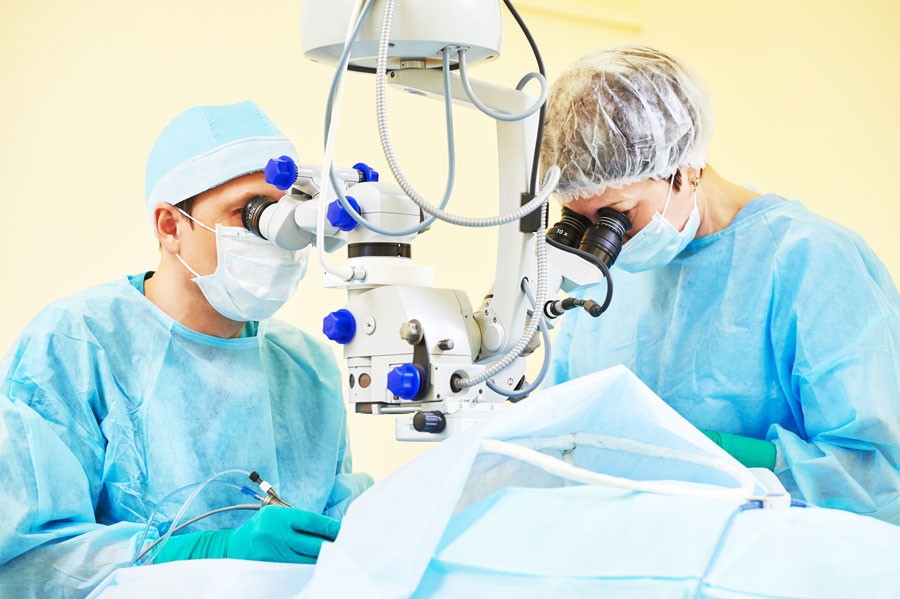Non-surgical cataract treatment
There is no nonsurgical treatment for a cataract. Preventative measures include wearing good ultraviolet (UV) blocking sunglasses to protect your eyes from the sun. Anti-oxidant vitamins may retard cataract changes.
Smoking accelerates cataract development and should be avoided. Some improvement with glasses is possible until the cataract becomes more advanced. Routine eye exams are important in watching for cataract formation that may be the result of natural aging changes, medicines, or general illnesses.
When should you have cataract surgery?
Cataract surgery is elective.It is done only when the person wants and needs it. Everyone has a different personality and different needs. Choose to have surgery when you cannot see to enjoy or perform to your satisfaction in jobs, hobbies, driving, athletics or outdoor activities. Some people are more demanding of their vision, and have surgery earlier than others who are not troubled by diminished vision.
Current cataract technology
Cataract surgery is fast, comfortable, and quite successful. Surgery can and usually is performed as outpatient surgery. Anesthesia consists of minimal sedation and a local block, usually by drops alone for comfort. The surgery usually takes 10 to 15 minutes. You return home shortly after and most normal activity can be resumed.
All surgical work is done through a self-sealing (sutures are not used) opening into the eye that is about the size of a pen tip. Lasers are NOT ordinarily used to remove Cataracts, rather the preferred method uses ultrasound energy.
The cloudy lens is removed with an instrument that loosens the cloudy lens protein (emulsifies) and gently vacuums it out of the eye. The instrument is called a phacoemulsifier and is not a laser. The phacoemulsifier uses ultrasound energy to loosen the cataract. Laser cataract removal is still experimental in the USA.
Once the cloudy lens is removed, a lens implant is necessary to restore the focus of the eye. The lens implant is folded and inserted through the same tiny opening into the eye.
The lens is placed through the pupil, behind the colored iris to replace the natural human lens. The lens is permanent and restores the focus of the eye.
Cataract Lens Implants
When the cataract, the cloudy lens, is removed, the haze is eliminated.
However, the focus of the eye must be restored. Intraocular lens implants are made of a type of plastic, acrylic or silicone.
The lens implants can be folded to permit placement inside the eye through the tiny incision already made for cataract removal. The power of the lens implant is usually calculated to give the best distance vision possible without glasses. Some patients prefer to have their implant so that they will not need glasses for near tasks instead.
Glasses may be necessary to sharpen vision for more demanding distance tasks like driving or for fine near tasks.
Advanced technology lenses are available to correct astigmatism and to restore both distance and near correction together. Multifocal lenses like Restor® lens have multiple points of focus in the lens to allow distance, intermediate and near vision. The Crystalens accommodating lens acts like a natural lens in the eye by changing its focus from distance to near as needed.
Cataract Lasers
From several weeks to several years after successful cataract surgery, a cloud may develop behind the lens implant.
This is called a secondary cataract and will blur vision much as the original cataract did.
The YAG laser is used in the treatment of secondary cataracts. The YAG laser makes a small opening in the cloudy membrane behind the lens implant. This requires only minutes and usually results in immediate vision improvement. The YAG laser is not used for the original cataract surgery.
Cataract Surgery Recovery
After surgery people usually go home and rest for the remainder of the day. The first day after surgery your doctor may perform a brief post-operative evaluation. Eye drops are used to promote healing. The eye must be kept clean and protected from injury. For one week a shield is worn over your eye at night to protect it.
You may usually resume most normal activities including work, shopping, driving, hobbies, and most athletic activities immediately. Activities or athletics requiring excessive strain, or that may cause sweat or dirt to come near the eye should be avoided for the first week. You should not go swimming or use a hot tub for 2 weeks after your surgery. Your vision may be quite good immediately or may require a week or more to clear. If glasses are needed, they are usually prescribed three to four weeks after surgery.


